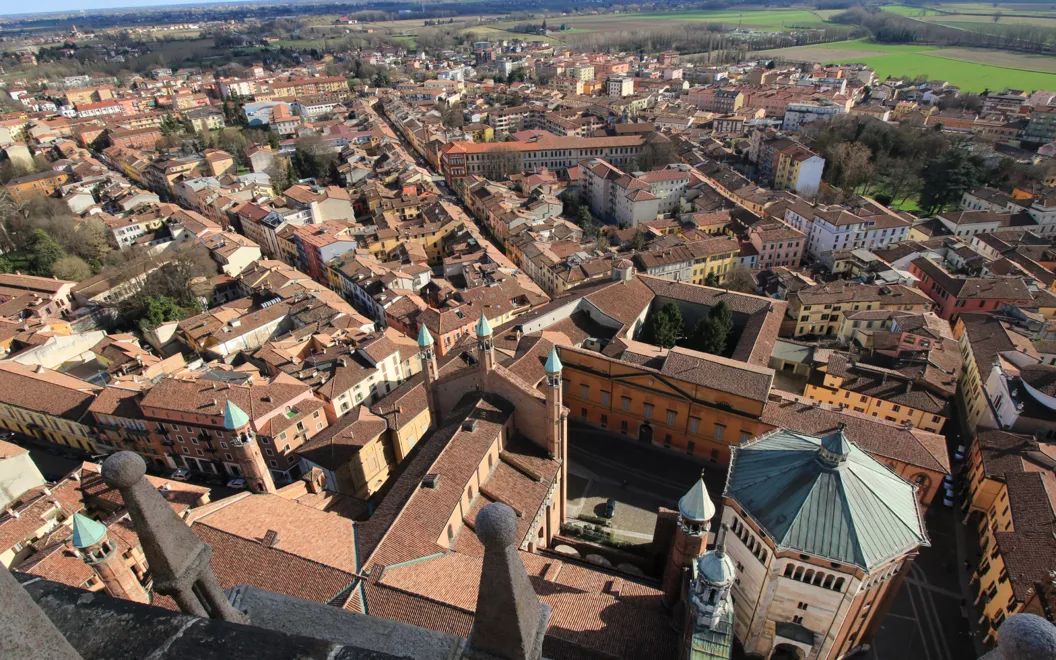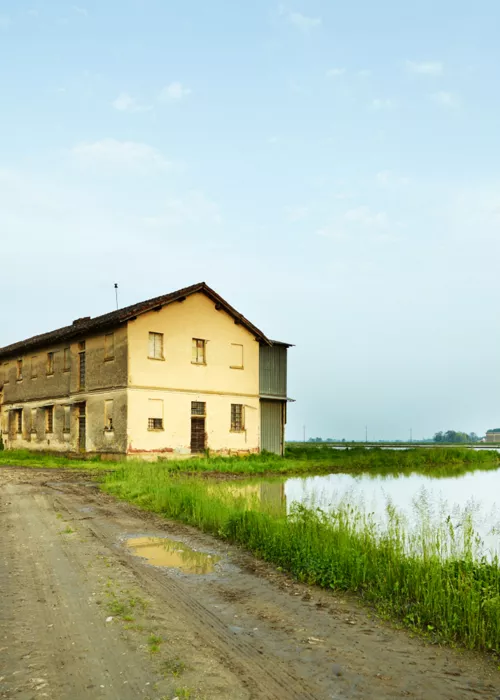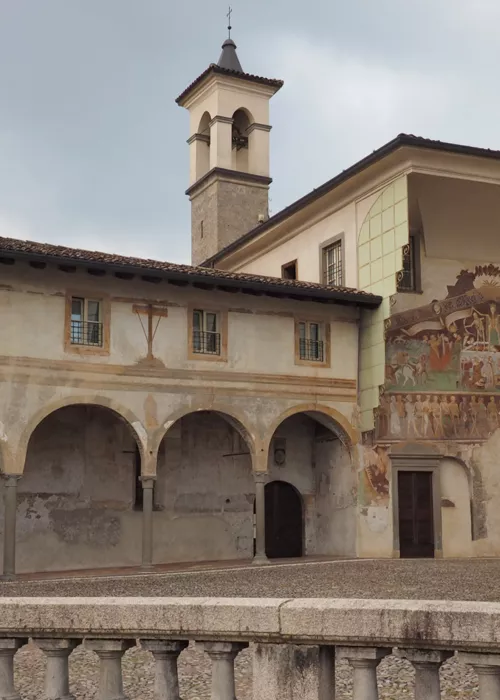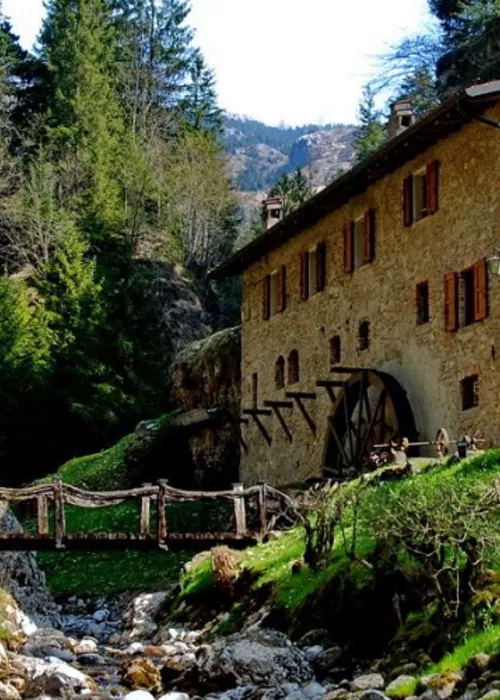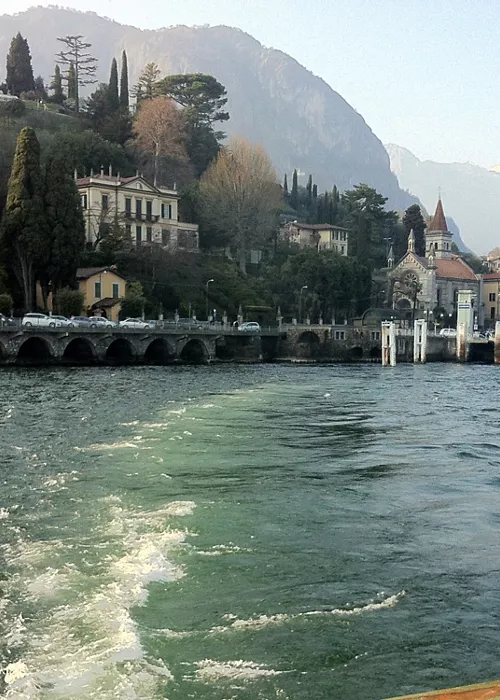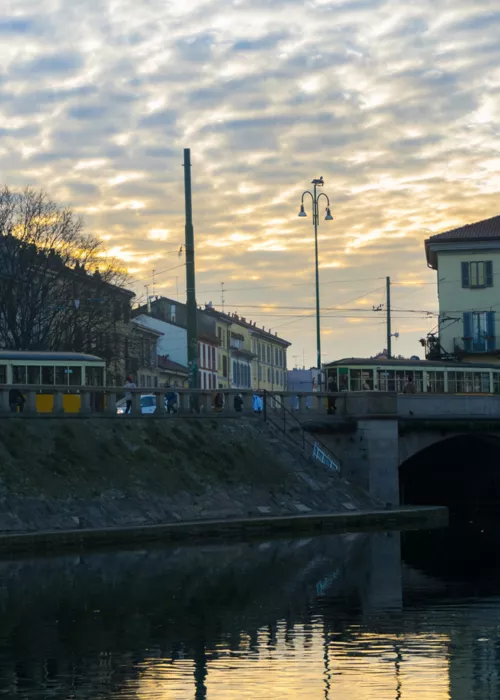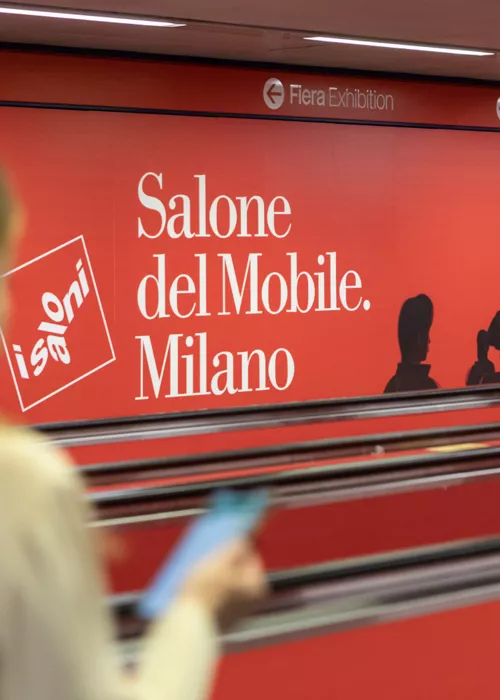Piazza del Comune

Cremona's main square, the public and religious heart of the city, is one of the most beautiful piazzas in Italy, and certainly the first thing to see when you visit. The square takes its name from the City Hall, with the Loggia dei Militi beside it, but it is also identified with the city's main religious buildings: the Cathedral of Santa Maria Assunta, the Torrazzo tower and the Baptistery.
The character of the square is defined by the 4th-5th century portico, which runs from the base of the bell tower along the full length of the Cathedral, decorated with statues of saints and cherubs in the section beside the church. Below the portico is a stone slab and a doorpost dating from shortly after the year 1000, an 11th-century sarcophagus, a fragment of a Romanesque column, a late 16th-century family tree, a fragment of a 12th-century column depicting a lion, and the sarcophagus of a jurist who died in the mid-14th century, engraved and signed by Bonino da Campione. To the right of the porch on the portal is an early 16th-century sarcophagus.
Cathedral of Santa Maria Assunta

Looking at Cremona Cathedral from Piazza del Comune, you are greeted by architecture and sculpture of the Lombard Romanesque period. On the marble façade, a 13th-century prothyrum extends up to the double row of loggias at the top. It is decorated with splendid reliefs depicting the agricultural work carried out in each month of the year, sculpted by students of Benedetto Antèlami. The porch contains an aedicule with three 14th-century statues, surmounted by a rose window. But the eye is drawn towards one of the tallest brick bell towers in Europe, named, as every citizen of Lombardy knows, Il Torrazzo.
Apart from the façade and bell tower, it might recalled that the cathedrals of the Golden Age were built starting with the apse. Thus, those who are well informed walk around the outside of the building before entering. In this case, however, the rule is misleading, as the transept of the cathedral is clearly the result of later alterations, when the church had already been standing for two centuries. The head of the transept, on Largo Boccaccino to the right of the church, has a prothyrum, lancet windows, rose windows and terracotta ornaments dating back to the 13th century. The oppposite side, apart from the three original apses, is even later, dating from the mid-14th century.
The richly-decorated interior moderates the severe appearance of the cathedral. From spring through to autumn, you can be sure of a warm welcome here from the volunteers of the Italian Touring Club, in one their Aperti per Voi initiatives. It's a shame that the Touring Club does not have the resources to open the Baptistery, which is located next to the Cathedral.
Torrazzo

If you want to be sure of how many steps it takes to reach the top of the bell tower, all you have to do is consult the website of the Museo Verticale del Torrazzo (Vertical Museum of Torrazzo) or count them in person: if you do, you can console yourself with the fantastic views from above over the city and the Lombardy plain.
In fact, the dizzying bell tower of the Cathedral of Santa Maria Assunta, outside the church like the Baptistery , is more than a hundred metres high and consists of two square-based rods inserted into each other, separated by a cavity that houses the staircase. It seems that the tone of the belfry's nickname, certainly affectionate but perhaps with a tinge of rancour, might have been due to the fatigue that the watchmen have always had to endure.
On the side towards the Piazza del Comune , the original mechanism of an astronomical clock from the late 16th century still works. At the bottom, the Renaissance portico that connects to the church also has a nickname: Bertazzola.
The Violin Museum

From the Piazza del Comune it doesn't take long to reach the temple of Cremonese violin making: just take Via dei Gonfalonieri next to the Palazzo del Comune and turn left into Via Monteverdi. It goes without saying that, once there, you are not allowed to hold a bow and experience for yourself the exquisite quality of the instruments. However, the Museum brings you very close to this sensation. Violas, violins and cellos made in the city by craftsmen-artists such as Andrea and Niccolò Amati, the Guarneri and, above all, Antonio Stradivari can be seen at very close range, even though they are protected in display cases, and, thanks to the multimedia of recorded performances, their sound can be heard. On some occasions (the calendar is public) the period instruments are then played live in front of everyone.
In addition to the ten rooms of the museum displaying, among other things, the instruments awarded prizes in the International Violin Making Triennial competitions organised since 1976 Cremona also offers the opportunity to visit the showroom of the Consorzio Liutai "Antonio Stradivari", in Piazza Stradivari, a few steps away from the Palazzo del Comune and, by appointment, the small Casa Stradivari where the master of masters lived, at 57 Corso Garibaldi. About ten minutes' walk along the same Corso Garibaldi is the Church of S. Luca, with its elegant architecture of Romanesque-Gothic origins, a prothyrum over 13th-century lions and 15th-century frescoes inside. Also not to be missed is the late fifteenth-century Palazzo Raimondi, home to the musicological studies of the University of Pavia and the Violin Making School (Scuola Internazionale di Liuteria).
Via Solferino

From the Piazza del Comune, facing the Cathedral of Santa Maria Assunta, you can take the pedestrianised street to the left and, with the volunteers of the Touring Club Italiano, in fine weather, you can visit the Strada Romana Basolata (Roman road). Today located more than 4 metres below street level and protected by a small archaeological museum, the section of paved street belonging to one of the minor thoroughfares emerged in 1967 during excavations for the construction of the Chamber of Commerce. From Via Solferino, you can start walking through the rest of the centre among excellent shops. Even before arriving at the gardens in Piazza Roma, you may notice that from one shop window to the next, among clothing shops, cafés and bicycles, sticks of nougat and jars of mustard stand out. You are in Cremona, after all.
The whole or chopped fruit that forms the solid component of this product (cherries, peaches, apricots, oranges, tangerines, pears, figs, and more) and the sugary juice with crushed mustard seeds in which the fruit is preserved produce a spicy-sweet delicacy that, while apologising to Dante for the linguistic theft, "intender non la può chi no la prova" ("can't be understood by anyone who hasn't tried it"). For those who are not yet familiar with mustard, it may be added that it pairs well with cheese or meat.
As for Cremonese nougat, with its infinite varieties also in terms of consistency, its common characteristic is that of a toasted sweet based on a mixture of honey, egg white and almonds (or hazelnuts), sweetened and encased in a light white wafer.
"Ala Ponzone" Civic Museum

Continuing straight after Via Solferino beyond the green of Piazza Roma, on your left you will see a small violin shop at the corner where Via Ugolani Dati begins. Taking it, you will soon encounter Palazzo Affaitati with the largest collection of historical art in the city.
The twenty or so rooms introduced by a majestic staircase are particularly striking for the quality of the layout of the Art Gallery, with Italian paintings from the 14th to the 18th century. The original collection was donated in the 19th century by a Cremonese aristocrat, but was increased over time thanks to works from local churches and individual benefactors. Particularly outstanding masterpieces, among the many mainly of the Lombard and Venetian school, are a Saint Francis by Caravaggio and an Ortolano also known as "Scherzo con ortaggi" by Arcimboldo. Other sections cover the applied arts, especially porcelain and ceramics, and modern Lombard painting from the last two centuries. Finally, one wing of the museum consists of the Music Rooms, a collection of stringed instruments important for their quality, rarity and state of preservation.
With Palazzo Affaitati in mind, it is worth bearing in mind that elsewhere in the city, there are other exhibition sites that are definitely worth a look: for example, the Archaeological Museum near Palazzo Fodri and the Museo della Civiltà Contadina ("Museum of Rural Life").
Monastery of S. Sigismondo

Here we are somewhat out of the way: those who have come to Cremona by train will need half an hour by bus from the centre, not much less than it takes to get to S. Sigismondo on foot along Via Giuseppina.
The church overlooks a small square named after Bianca Maria Visconti, the noblewoman who decided to found the monastery on the site of the chapel where twenty-two years earlier, in 1441, her marriage to Francesco Sforza was celebrated. As a whole, the complex constitutes one of the most interesting testimonies of the evolution of the Cremonese Renaissance from the initial 15th-century building phases to the Mannerism of the rich pictorial heritage, with frescoes and paintings of the local 16th-century school.
The tiburium protecting the dome and the apses are the work of the Cremonese architect Bartolomeo Gadio, while the naves and the façade are most likely the work of the engineers of the de Lera family. The portal also dates back to the end of the 16th century, while the bell tower, with the exception of the belfry rebuilt in the 19th century, has remained from the time of Bianca Maria.


